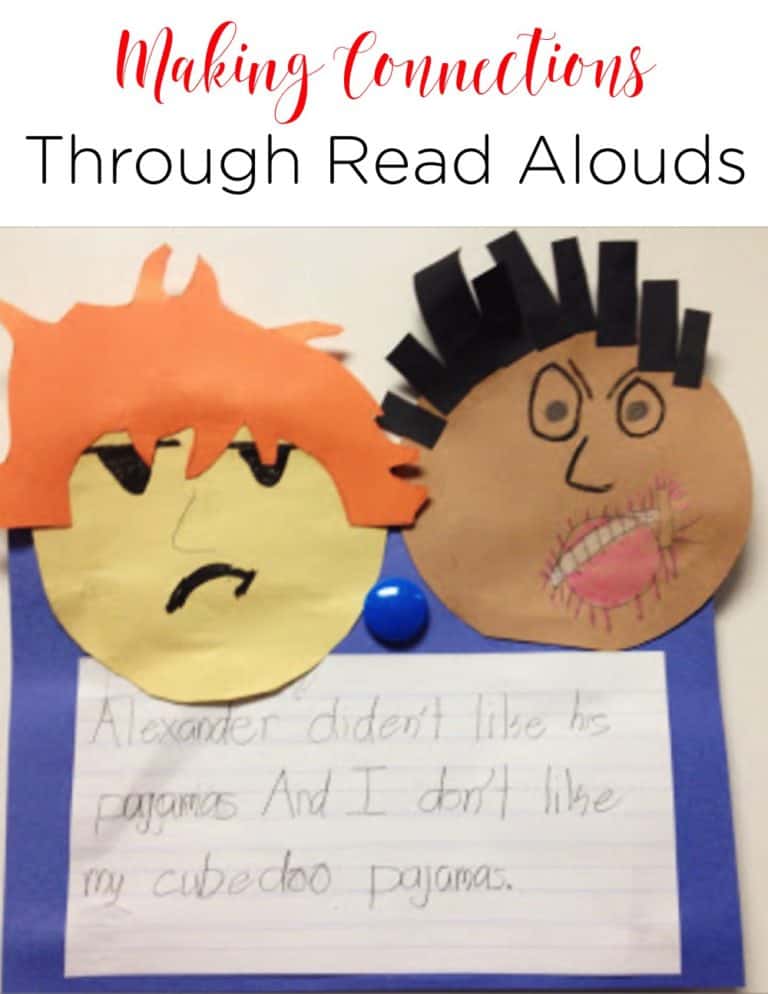


How does writing fit into your schedule? Are you able to share the experience with your students? Shared writing is one part of the balanced literacy
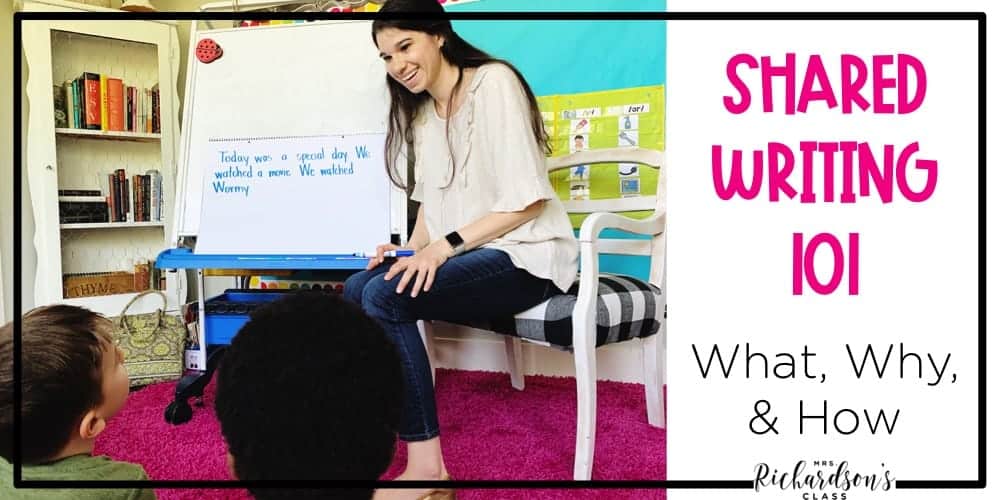
Shared writing is an opportunity to scaffold learning to help build strong and confident writers. It also creates a mentor text that students get to participate in writing that they can also refer back to if needed. There are so many benefits to shared writing in the classroom!
Shared writing is when the students collaborate on ideas for a shared piece of writing, and the teacher acts as a scribe using correct spelling and punctuation. This writing is a good example to be displayed in the classroom for students to reference. This block of time is usually 10-15 minutes.
Shared writing is often confused with interactive writing, but they are different. The main difference is that in shared writing, the teacher writes. In interactive writing, the students use the pen with teacher assistance. You can check out more about interactive writing in this post HERE.

All you really need is chart paper (I like this one from Amazon HERE) and markers like these HERE. I like having what we call “oops tape”, a pointer, and an alphabet chart handy, too!

You could also do this on an interactive whiteboard, too.
1. Start by letting students know they will be helping you brainstorm ideas for a new piece of writing. It should be something that’s a shared experience for the whole class- something funny that happened, a science experiment, an announcement, daily news, a letter to a school staff member, etc.
2. Let students partner talk to discuss ideas for the story. As students are discussing, try to listen in to get an idea of what their conversations are sounding like. You can coach partners if the discussion needs to be redirected or bring the level of discussion up to a higher level.
3. Pick a topic to write based off of an idea you heard. I just usually say, “I heard one pair talking about __. That sounds fun to write about today.” You could also have student input to help you narrow down on a topic first. Once you’ve chosen it, begin writing based on what the students are suggesting.
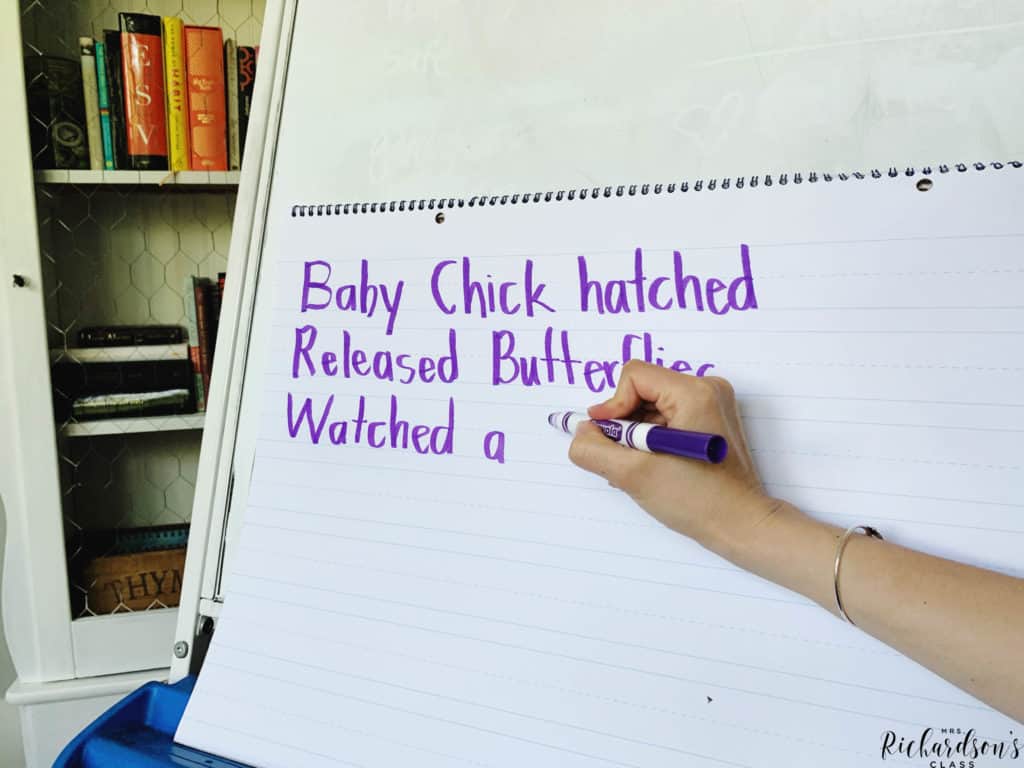
4. Invite students to collaborate on what should be written through the piece. Ask questions like, “What should we add here?” “What would make this part more interesting?” “What might make this sound better?” “How should the story end?” Give students time to turn and talk to a partner to discuss throughout the writing process. Listen in again and coach any partners that need guidance. Add more to the story/piece sentence by sentence.
5.
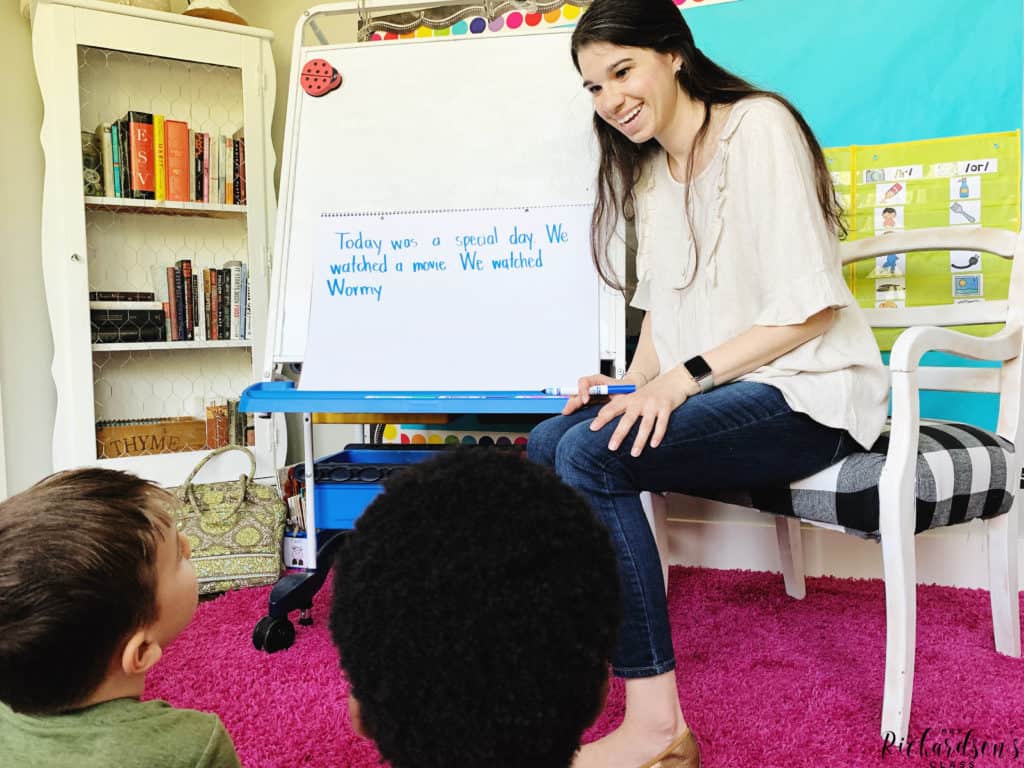
6. Reread and revise as needed. Ask yourself and students questions like, “How can we add a detail about __ to be more clear?” “Is there something missing here we need to include to make more sense to the reader?”
The overall gist is to ask students for ideas, let them partner talk, coach as needed, and write down their ideas in conventional sentences and spelling. And repeat!
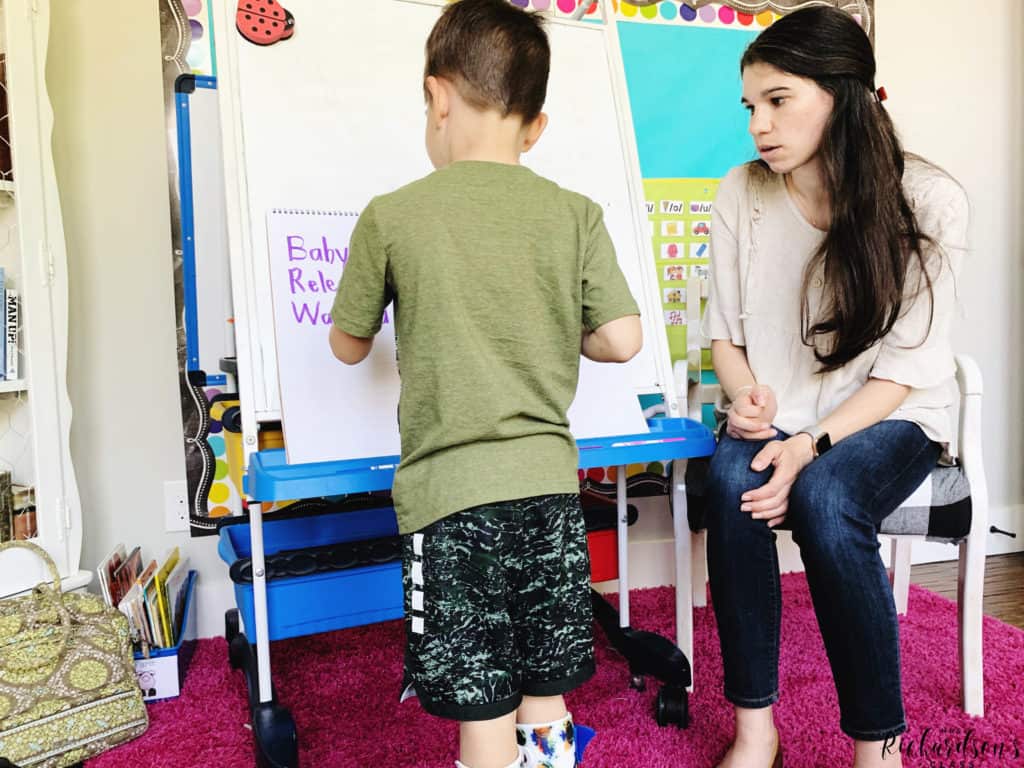
Remember, the goal of shared writing is to help students write better, think deeper about their writing, and see a full picture of the complete writing process.
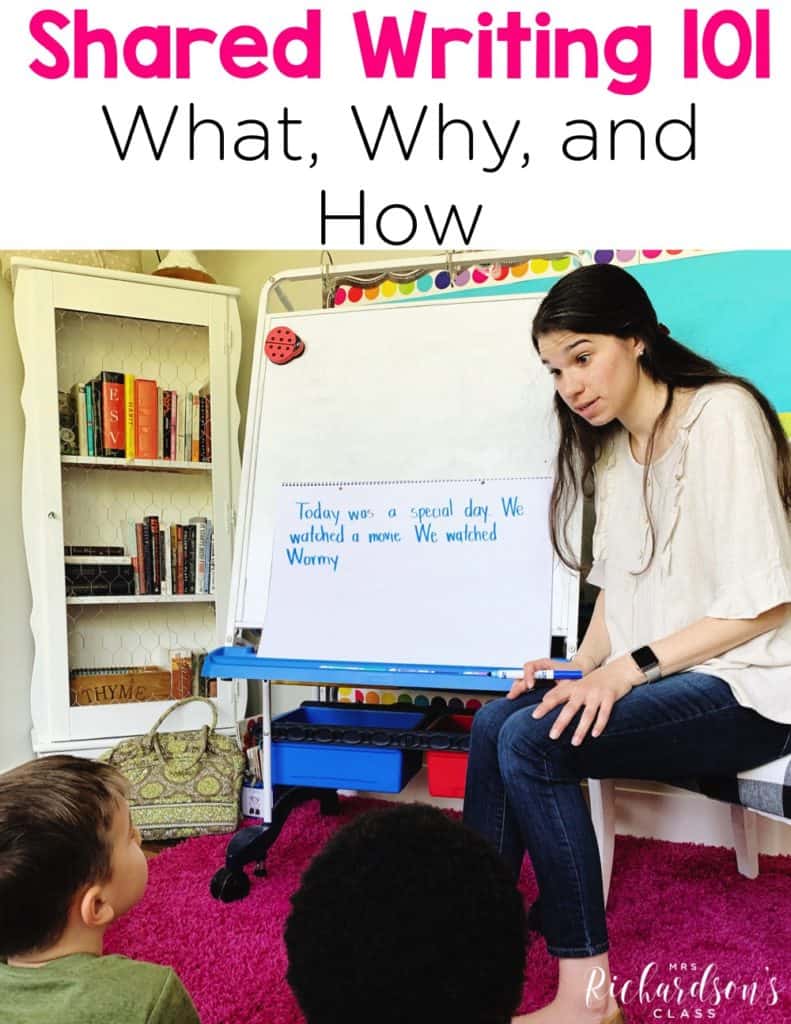
pin it

Want to use the latest research to boost your readers during small groups? This FREE guide is packed with engaging ideas to help them grow!

I’m a K-1 teacher who is passionate about making lessons your students love and that are easy to implement for teachers. Helping teachers like you navigate their way through their literacy block brings me great joy. I am a lifelong learner who loves staying on top of current literacy learning and practices. Here, you’ll find the tools you need to move your K-2 students forward!


| Cookie | Duration | Description |
|---|---|---|
| cookielawinfo-checkbox-analytics | 11 months | This cookie is set by GDPR Cookie Consent plugin. The cookie is used to store the user consent for the cookies in the category "Analytics". |
| cookielawinfo-checkbox-functional | 11 months | The cookie is set by GDPR cookie consent to record the user consent for the cookies in the category "Functional". |
| cookielawinfo-checkbox-necessary | 11 months | This cookie is set by GDPR Cookie Consent plugin. The cookies is used to store the user consent for the cookies in the category "Necessary". |
| cookielawinfo-checkbox-others | 11 months | This cookie is set by GDPR Cookie Consent plugin. The cookie is used to store the user consent for the cookies in the category "Other. |
| cookielawinfo-checkbox-performance | 11 months | This cookie is set by GDPR Cookie Consent plugin. The cookie is used to store the user consent for the cookies in the category "Performance". |
| viewed_cookie_policy | 11 months | The cookie is set by the GDPR Cookie Consent plugin and is used to store whether or not user has consented to the use of cookies. It does not store any personal data. |
4 Responses
Great easy to read and implement ideas
Do you have any other ideas about what we can write about during shared writing?
Ideas, it seems, do not pop up every day. For some reason, I have a brain freeze to think about how to move shared writing forward in our classroom.
Thanks for all your help.
Do you have a list of interactive writing topics that you’ve completed with your class?
Hi Ashley! I do not. 🙂